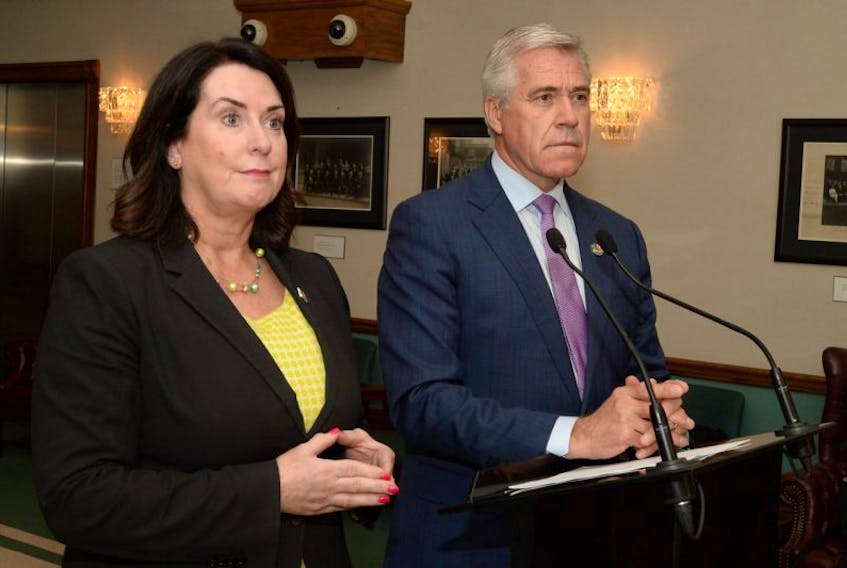Ball and Martin appear to have irreconcilable versions of what happened back in 2013 with a risk assessment report prepared by SNC Lavalin.
“I hadn’t seen it. I hadn’t received it. It hadn’t been transmitted to me. So, you know, I have no recollection of anything like that,” Martin said in an interview with The Telegram Tuesday, echoing what he said in a lengthy statement to the media Monday night.
Meanwhile, up at Confederation Building, Ball was saying Martin absolutely did know about the 2013 SNC Lavalin risk assessment report, which raised major red flags about the Muskrat Falls project and the potential for cost overruns.
“This report was done, and it was completed, as it says, for public consumption,” Ball said.
“We asked SNC Lavalin about that, and we were told with this report, there was a meeting, and the CEO was in the room when this report was discussed.”
A spokesman for SNC Lavalin offered a somewhat cryptic confirmation of what Ball said.
“I can confirm that we produced a report, in 2013, and that we’ve attempted to hand it over to Nalcor,” said media relations representative Louis-Antoine Paquin. “When we were asked for this report, we provided it.”
This isn’t the first time Ball and Martin have been in a public battle of credibility. Last spring, Ball insisted Martin resigned as CEO of Nalcor, while Martin said he was effectively sacked by Ball.
That running battle ended up with an auditor general’s report that sort of vindicated Martin.
This time around, Ball is saying the SNC Lavalin risk assessment report was proof the previous government and the leadership at Nalcor were reckless when they charged ahead with the Muskrat Falls project anyway.
“Simply identifying the risk early on (they) had the option then to simply stop the project then and stop the madness of where we are today,” Ball said.
Martin had a different take on it, saying that even though he didn’t see the SNC Lavalin risk assessment report, internally Nalcor had identified all the same potential problems, and it was putting in plans to mitigate against those risks.
Martin said the whole point of risk assessment is to anticipate where the problems might be, and then put special focus on those areas to make sure the project managers are on top of things to avoid big problems.
“The most critical piece to me is that yes, we were on top of all the risk factors. Yes, we had risk mitigation plans in place. That is the actual nature of project management, and we were totally on it.”
Martin made it clear that he still very much believes Muskrat Falls is a good project, and the government will be able to mitigate costs. He also said that over the coming decades, the cost of oil is expected to go up, and so even if it doesn’t seem like Muskrat Falls is the least-cost option right now, long-term energy trends will vindicate the project.
Martin said that when it comes to the huge cost overruns, some of that is common with large-scale megaprojects, and given the initial cost estimates, he isn’t totally surprised.
“Well, I knew there was a range from potentially going lower, to potentially going higher, because they are estimates.” he said. “So you know, you have to allow for reality, and I have.”









